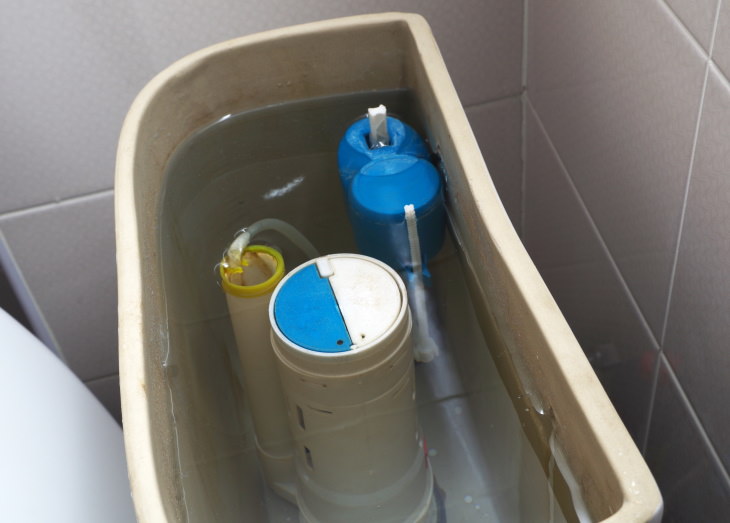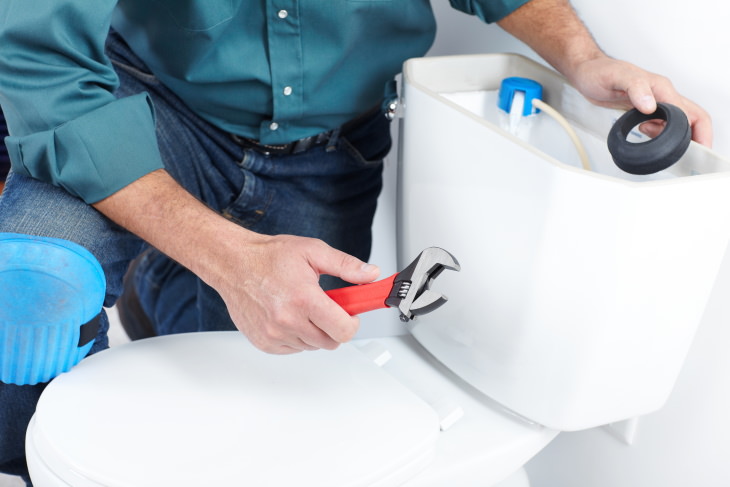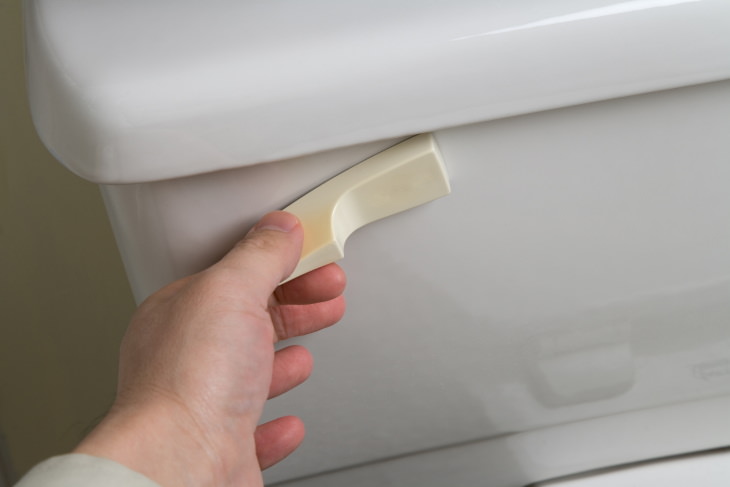

In the vast majority of cases, a running toilet points to a problem in the toilet tank. In order to understand what’s wrong in the tank, you must first understand the main parts of the tank that can malfunction and how they work. To access the tank, open up the lid. These are the three key parts that usually fail and make your toilet run as a result:
When you flush the toilet, the water level drops, and the fill valve, which is connected to the water line (a hose that goes out of the tank), opens and water starts running into the tank through the water line until it’s filled back up. If any of the above-listed parts are malfunctioning, water will be slowly leaking from the tank, and you will hear the fill valve running in order to keep the tank full.
The video below shows the approximate structure of the toilet tank and explains its crucial parts that can make a toilet tank leak water. Here's a step-by-step guide on how to check and fix a running toilet.
A faulty fill valve is one of the most common causes of a running toilet. If you hear that the toilet is constantly working, the fill valve is likely the issue. You can test the toilet valve by lifting the float. If the water stops, the valve is working well, and you have a problem with the float (see the following section).
If the water continues to run, there might be an issue with the refill tube. This is the plastic tube that connects the fill valve and the overflow pipe, usually located to the right. The refill tube should be attached firmly and it shouldn’t extend into the overflow pipe. If the refill tube is too long and goes above the overflow pipe, it might be difficult for the water to flow into the overflow tube. In this case, you should trim it slightly to make sure it fits better.
Related Article: How to Unclog a Toilet



So, you checked all the parts we mentioned above, and they all seem to work just fine, but your toilet is still leaking? The last thing you can check before you give up and call a plumber is the handle. A toilet handle is directly connected with the flush rod, which you can identify by opening the tank and lowering the handle. Sometimes, the chain that connects the rod with the flapper is too short, it won’t allow the flapper to close completely and water will leak into the toilet bowl. You can fix this issue by buying an extra chain at the hardware store and replacing it, adjusting it to a slightly longer length.
If your running toilet problem sticks around even after you’ve made all the necessary adjustments and/or replaced all the faulty parts, you may need to replace the entire flushing system. To do so, it’s best to seek professional help.